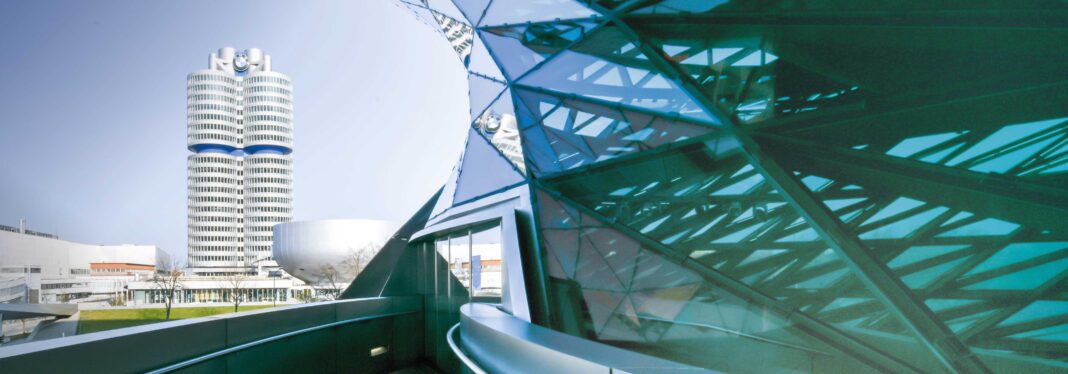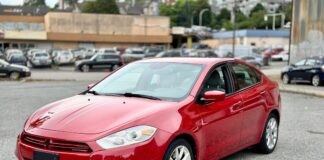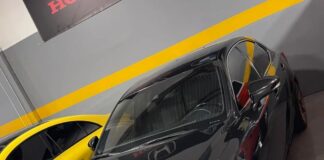
Ladies and Gentlemen,
The BMW Group has a strong global footprint. It serves as a local
partner in individual regions of the world, contributing positively to
industrial economic value in all. We currently have production sites
at 31 locations on five continents. We also have research and
development centres in 17 countries – not to mention 41 sales and
marketing and financial services locations across the globe. This is
how we make sure specific trends, technological innovations and the
different needs of customers in the regions are incorporated in our
products and their development. To achieve this, we enter into
targeted strategic collaborations with strong and innovative local
tech players.
Our environment remains highly volatile and will likely continue to
be shaped by unforeseeable circumstances. Many experts assume that the
major economic areas are likely to drift further apart – both from a
political and technological perspective, and also with regard to
regulations. That is why it is so important for us to seize
opportunities that will always present themselves at short notice in
markets around the world. At the same time, our strategic thinking,
our actions and our decision-making are always forward-looking, with a
clear long-term focus.
Our goal is for the BMW Group to maintain its profitable growth and
always be in a position to make appropriate investments in our own
future. In keeping with this logic, we are charting our own course for
the future, step by step, with our rolling strategic approach and
long-range corporate planning. On the one hand, our strength lies in
the consistency with which we pursue our strategy. On the other, it
comes from the flexibility and speed with which we tackle sudden changes.
Once again, we have ambitious plans for the current financial year.
After the first three months, we are on track to meet our goals for
the full year. As Nicolas Peter explained:
The financial results for the first quarter of 2022 and the first
quarter of 2023 are not directly comparable – due to the one-time
effect from the full consolidation of our BBA joint venture.
At the same time, our product line-up is younger, broader and more
attractive than ever. Across all brands, all segments and all drive
technologies, we have outstanding vehicles that were recently launched
or will be released onto the market in the near future. We are
exploiting potential everywhere – and experiencing a noticeable tailwind.
As you know: We expect Group deliveries to be slightly higher this
year, compared to 2022, as we continue to build on our solid incoming
orders. This applies equally – and that is a particular quality – to
our all-electric models and to our conventionally-powered vehicles.
This proves once again that: Our long-term product strategy,
including ramping up BEVs in line with demand, is delivering results.
Through our balanced positioning in the world regions, we can
compensate for regional market fluctuations, just as, for example, a
certain market weakness in China can currently be offset by a stronger
performance in the USA.
The same is true of our broad technology approach. This enables us to
meet different demands in markets, while accounting for the varying
speeds at which they are creating the necessary infrastructure for
e-mobility. We remain true to our conviction that all types of
drivetrain must make a positive contribution to reducing
CO2 emissions. This is particularly relevant in the short
and medium term.
Our BEV deliveries grew strongly in Q1 across all four major regions
– Europe, Asia, the Americas and the rest of the world. BEV sales for
the BMW brand alone grew by 112 percent on average. All regions
contributed to this. In April, the BMW brand continued this trend by
doubling BEV sales yet again.
Our global balance in BEV growth fits perfectly with our local for
local approach to our worldwide manufacturing activities, R&D and
our BEV production. Together, all of these factors increase our
resilience as a global company.
Now, we are expanding this even more by adding an additional
component: local manufacture of high-voltage batteries. This has
already been established for current electric models at our facilities
in Germany and China. In a next step, we are adding further capacity
for the sixth generation of our battery technology – for example, in
Woodruff, for our US plant in Spartanburg and in Debrecen, for our
future plant in Hungary, as well as in San Luis Potosí, Mexico.
What will be the key success factors for us this year?
Our diverse range of products, with a clear focus on ramping
up
e-mobility.
Digitalisation of our products and of the company.
On point preparations for the NEUE KLASSE.
Let’s take the first point:
Regional differences in demand for alternative drive technologies are
becoming increasingly evident. I experienced this for myself just
recently. In April, I visited the Japanese market and the Shanghai
Auto Show. In Japan, hybrids and efficient combustion-engine vehicles
are especially popular with customers. There is also a lot of interest
in hydrogen as an alternative method of propulsion. It was therefore
not surprising that the BMW iX5 Hydrogen* from our global pilot fleet
was welcomed with open arms. Demand for pure battery-electric
vehicles, on the other hand, is developing steadily, but slowly, in
Japan and remains at a low level.
On the other hand, you have China, where BEV demand is growing rapidly.
Today, China is already the biggest growth driver for e-mobility. For
the first time, BMW presented only electrified models at Auto
Shanghai. These included the i7 M70xDrive*, the XM Label Red* and the
iX1* long-wheelbase version which we build “in China for China”. It is
no secret that China’s BEV market is highly competitive – and equally
among both established and new players. Several manufacturers are
currently lowering prices – in some cases, substantially – to gain
market share. At the BMW Group, we have a strong position in China. In
the first quarter of 2023, we sold significantly more BEVs there than
our established competitors and also more than many new manufacturers.
By the end of this year, the BMW Group will already offer 11 BEV
vehicles in China across all our brands. And with our BEVs we are
exclusively targeting the upper premium and luxury segments.
Also, in China and in the current context, we benefit from our broad
technological approach. The comparison of the car markets in Japan and
China illustrates clearly the extent to which automotive manufacturers
face varied market requirements during their transformation. We are
targeting profitable growth with all drive technologies and in all
segments and therefore leveraging earnings potential.
The upper premium and luxury segments are a good example of this.
Growth in this segment will get a major boost this year from new BMW
models: the 7 Series and the XM*, as well as the X7 model update – not
to mention the Rolls-Royce model family. We are currently releasing X5
and X6 updates onto the markets, including the particularly successful
long wheelbase version of the X5 in China.
And let’s not forget the popular and in-demand models from BMW M.
Over the coming months we will release the model updates for the X5 M*
and X6 M*. Many fans are also looking forward to the BMW M3 Touring*
that was just released onto the market. It was recently named “Dream
Car of 2023” by Autocar Awards. And the M2 Coupe* is also ready to hit
the road.
With our strong portfolio, we are targeting growth in the
mid-double-digit percentage range in the upper premium and luxury
segments this year. We are aiming even higher with our fully-electric
vehicles – and planning for high double-digit growth. Over the full
year, BEVs are expected to account for 15 percent of our global
deliveries. This will be another big leap and the highest absolute
increase we have targeted to date. Key models, in particular, will
drive our sales, including at BMW, the BMW i4* sport coupé, the iX,
the iX3* and the new i7* and new iX1*; and at MINI, the Cooper SE*.
And we will keep up the pace with additional new products: The new
BMW 5 Series and new BMW X2 will be released onto the markets towards
the end of the year, including the i5 and iX2 BEV variants. The BMW
Group will then have at least one all-electric model in all its main
model ranges on the roads. We recently conducted intensive testing of
the BMW i5 under the most difficult conditions, including extremely
low temperatures. It also impressed media representatives at our
recent pre-launch test drive events, as the very positive coverage
demonstrates. Bottom line: The BMW 5 Series is THE top business sedan,
with all drivetrains — conventional and fully electric.
Our BEV roadmap is precisely defined: By 2024, at least one in five
of the BMW Group’s new vehicles should be a BEV; by 2025, it will be
one in four; in 2026 one in three. That is another reason why we are
in a better position with our targeted BEV ramp-up than our key competitors.
As a company, we remain innovative: In the field of battery
technology, for example, we are in the top three for patent
applications in Germany. There were only two battery specialists from
Korea and China ahead of us last year.
Let’s move on to the second topic.
Digitalisation is the most dynamic field in the mobility of tomorrow.
That is why we are making BMW digital – because digital products and
features can only be created in an organisation that views
digitalisation holistically as an opportunity. The know-how we have in
our team is crucial in this respect. That is why we have launched the
biggest individual training programme in the history of our company
for key areas of digitalisation. This digital boost will create the
knowledge and tools we need to identify and implement digital
potential in every area of responsibility.
Let me give you three examples to show how we are implementing this
knowledge to create a seamless digital experience of mobility that
benefits our customers:
- In the new BMW 5 Series, customers will experience automated
driving in a new dimension: It is equipped with the “Highway
Assistant”, which continuously performs distance control and
steering tasks. For the first time, the vehicle changes lanes using
eye activation. An absolute world first. Customers will not find
such a comparable overall package anywhere else.
- Our Digital Key Plus: This digital vehicle key is no longer just
available for Apple devices. Customers can now also use their
Android smartphone to unlock and start their BMW. This is made
possible by ultra-wideband technology that guarantees maximum
security – you don’t even have to take your phone out of your pocket.
- Our multimedia offering in the new BMW 7 Series: Earlier this
year, we launched a pilot programme that makes selected live
Bundesliga games available in certain models. We are now expanding
this option. In the new 7 Series, the Theatre Screen transforms the
rear compartment into an exclusive seat in the stadium.
This brings me to my third and final point:
Alongside our current product line-up, we are also gearing up for the
next big breakthrough in innovation. 2023 and 2024 will be the
decisive phase of our preparations for the NEUE KLASSE. It will bring
added momentum to our sales of all-electric vehicles from 2025
onwards. We plan to release at least six models of this entirely new
BMW model generation onto the market in the first 24 months after the
start of production.
We are deliberately starting out in high-volume segments with a
Sports Activity Vehicle and a sedan in the 3 Series segment. The NEUE
KLASSE embodies all three pillars of future mobility. It is entirely
geared towards digitalisation and sustainability, and also
fully-electric. Our BMW i Vision Circular from 2021 and this year’s
BMW i Vision Dee show the direction of our thinking. In just a few
months, at the IAA MOBILITY, we will be sharing how the topics of
digital, circular and electric complement each other to form a totally
new and coherent overall concept.
Ladies and Gentlemen,
As you can see, during the current financial year, we are once again
taking a two-pronged approach: Internally, we are focusing on our
operational excellence. Across all brands and all segments, we are
offering our customers a new, modern, technologically diverse and
innovative range of products. At the same time, we are systematically
investing in our future and aligning the entire company for the launch
of the NEUE KLASSE. The BMW Group remains focused on delivering its
profitable growth and holding its successful course. For us, that
means an EBIT margin in the Automotive Segment within our target range
of eight to ten percent – even during the transformation towards e-mobility.
Thank you!
*Consumption/emissions data:
BMW iX5 Hydrogen: consumption weighted (WLTP): 1,19
kg H2/100 km, combined NEFZ: – , CO2 emissions weighted, combined in
g/km: – 0 g/km; electric range (WLTP) in km: 504 km (313 miles)
BMW XM: Fuel consumption weighted, combined in l/100
km: – (NEDC)/1.6-1.4 (WLTP); CO2 emissions weighted, combined in g/km:
– (NEDC)/36-32 (WLTP); power consumption weighted, combined in kWh/100
km: – (NEDC)/301-28.6 (WLTP); electric range (WLTP) in km: 82-90
BMW XM Label Red: Fuel consumption weighted, combined
in l/100 km: – (NEFZ) / 2,0–1,5 (WLTP); CO2 emissions weighted,
combined in g/km: – (NEFZ) / 45–35 (WLTP); CO2 emissions weighted,
combined in g/km: (NEFZ) / 33,6–32,5 (WLTP); power consumption (WLTP)
in km: 76–82. These are preliminary values that have not yet been confirmed.
BMW iX1 xDrive30: Power consumption in kWh/100 km: –
(NEDC)/18.1-16.9 (WLTP); electric range (WLTP) in km: 417-439
BMW X5 M60i xDrive: Fuel consumption combined in
l/100 km: – (NEDC)/12.5-11.5 (WLTP); CO2 emissions combined in g/km: –
(NEDC)/283-261 (WLTP)
BMW X6 M60i xDrive: Fuel consumption combined in
l/100 km: – (NEDC)/12.3-11.4 (WLTP); CO2 emissions combined in g/km: –
(NEDC)/279-258 (WLTP)
BMW M3 Competition Touring mit M xDrive: Power
consumption combined in kWh/100 km: – (NEFZ) / 10,4–10,1 (WLTP); CO2
emissions combined in g/km: – (NEFZ) / 235–229 (WLTP)
BMW M2 Coupé: Power consumption combined in kWh/100
km: – (NEFZ) / 10,2–9,6 (WLTP); CO2 emissions combined in g/km: –
(NEFZ) / 231–218 (WLTP)
BMW i4 eDrive35: Power consumption in kWh/100 km: –
(NEDC)/18.7-15.8 (WLTP); electric range (WLTP) in km: 406-483
BMW iX xDrive40: Power consumption in kWh/100 km: –
(NEFZ) / 21,4–19,4 (WLTP); electric range (WLTP) in km: 403–435
BMW iX3: Power consumption combined in kWh/100 km: –
(NEDC)/18.9-18.5 (WLTP); electric range (WLTP) in km: 453-461
BMW i7 xDrive60: Power consumption in kWh/100 km
combined: 19.6-18.4 WLTP
MINI Cooper SE Countryman ALL4: Fuel consumption in
l/100 km: 2.1-1.9 (NEDC), 2.1-1.7 (WLTP); power consumption in kWh/100
km combined: 14.8-14.1 (NEDC), 15.9-14.8 (WLTP); CO2 emissions in g/km
combined: 48-44 (NEDC), 47-39 (WLTP)



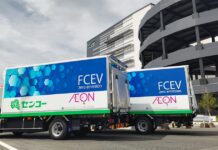
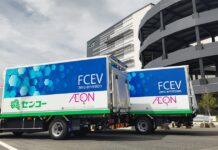
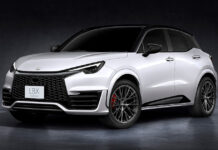
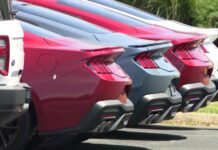
![[Presentation] Livestream of TMC’s Press Conference](https://www.miamicars.com/wp-content/uploads/2023/02/tmb_corporate-218x150.png)
